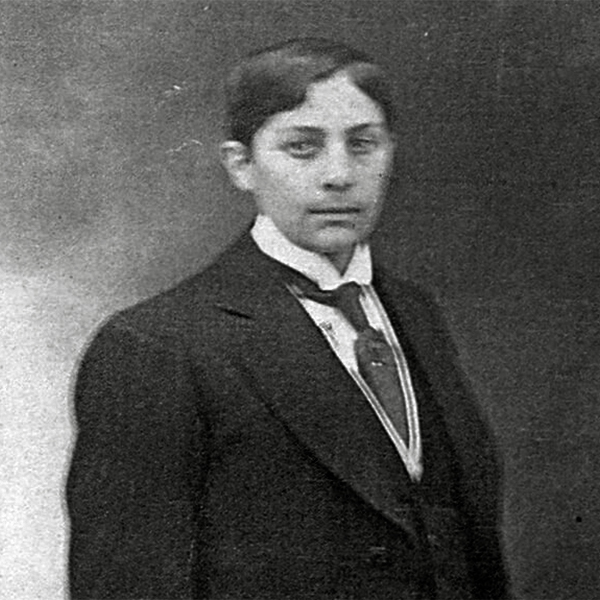
Who is Ali Sami Boyar? (1880-1967)
He is an artist who is famous for his paintings of Istanbul’s mosques and fountains. He is the owner of the images on Turkey’s first stamps and coins. Large-sized watercolor paintings have entered the history of painting. He was born in Istanbul in 1880. He is the grandson of a merchant named Hacı Hayrullah, who immigrated to Istanbul from the Ahiska town of the Caucasus.
His interest in painting emerged at an early age. He took art lessons from Major Cemal Bey in secondary school. His teacher’s support and encouragement was constant in the field of painting. He entered the Naval School in 1892 and learned oil painting and watercolor techniques from District Governor Şükrü Bey. In 1901, he graduated from the school’s Inşaiye class with the rank of lieutenant and was assigned to the Naval Inşaiye Painting House, a position he held for five years.
While Ali Sami Bey continued his duty at the painting house, he had the opportunity to continue his education at Sanayi-i Nefise Mektebi. He enrolled in this school in 1902 and took lessons from Osman Hamdi Bey, Salvatore Valeri, Ömer Adil Bey and Joseph Warnia Zarcecki. The artist, who worked as an art teacher at Rehber-i Tahsil School in the Fatih district in 1906, graduated from Sanayi-i Nefise in 1908 with the first place.
The artist, who was sent to Paris in 1910, worked with the Çallı Generation artists who were in Paris at that time, and in Fernand Cormon’s workshop at the National Academy of Fine Arts, for about four years. He returned home in 1914 with the start of World War I.
After returning to Istanbul, he left the army with the rank of captain. At that time, opening a fine arts school for female students was on the agenda. He became the first director of İnas Sanayi-i Nefise Mektebi, which was founded in 1914. He handed over this duty to Mihri Müşfik Hanım a month later.
Due to his expertise in antiquities, he was appointed director of the Naval Museum by Naval Minister Cemal Pasha. While he was in Paris, he learned the art of wax sculpture and moulage, which was a special specialty. He had the opportunity to practice this art in the museum by establishing a mannequin workshop within the museum; He also established a ship workshop. He prepared the museum catalogue. The catalog was published in 1917. His work laid the foundation for the development of the museum and its current form.
During World War I, he worked with his friends Sami Yetik Bey, İbrahim Çallı, Namık İsmail, Ali Cemal and Avni Lifij in the painting workshop opened in Şişli by the order of the Minister of War, Enver Pasha, and produced military compositions and grandiose paintings and produced works on historical subjects.
He gave painting lessons at the Naval School in 1919. In 1921, he became the director of Sanayi-i Nefise Mektebi. In 1922, the artist married English teacher Belkıs Hanım, the sister of the famous writer Halide Edip Hanım, and was appointed director of the Evkaf Museum in 1922.
He came first in the competition opened in 1925 and designed the pictures, texts and decorations on the first stamps of the republic. With a decision made by the Council of Ministers in 1926, he was assigned to work on the first banknotes issued by the Republic of Turkey. After the writing and pictures were prepared, he was sent to London to print the first paper money. During this duty, he was considered to have resigned from his position at the Evkaf Museum. He was the owner of the picture on the 1 TL note, Turkey's first paper money, which was released on December 5, 1927. in London in 1926; He opened an exhibition in Paris in 1930. In 1931, two of his works were accepted for the Paris salon exhibition.
He carried out versatile work at the Hagia Sophia Museum Directorate, where he was appointed in 1935. The discovery of the Temple's Baptism Boat in the museum, whose mosaics were cleaned by foreign experts, had a wide repercussion around the world. His book "Hagia Sophia" was published in 1941; He decorated the book with his own pictures. He retired in 1944.
Boyar, who devoted himself to painting after retirement and worked as a freelancer, is the first producer of the "Etch Engraving" type in Turkey. It is known that Ali Sami Boyar, who produced many works made with watercolor, charcoal, pastel, scanning and oil painting techniques, and most of his works have historical documentary value, painted almost all types of paintings, especially portrait, landscape and still life. After his retirement, he published articles on art in newspapers and magazines and taught art at the American College.
His works can be found in museums such as the Military Museum, Istanbul Painting and Sculpture Museum, Naval Museum, Istanbul Metropolitan Municipality Library and Museums Directorate, as well as private painting collections at home and abroad. He passed away in Istanbul in 1967.
Exhibitions
1926 Painting Exhibition London
1930 Painting Exhibition Paris
1931 Paris Mixed Salon Exhibition (with two works)
His oil paintings named "Borazancı" and "Turgut Reis" are among the collection of the Military Museum.




















